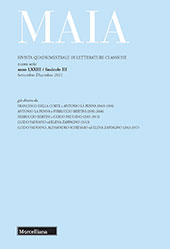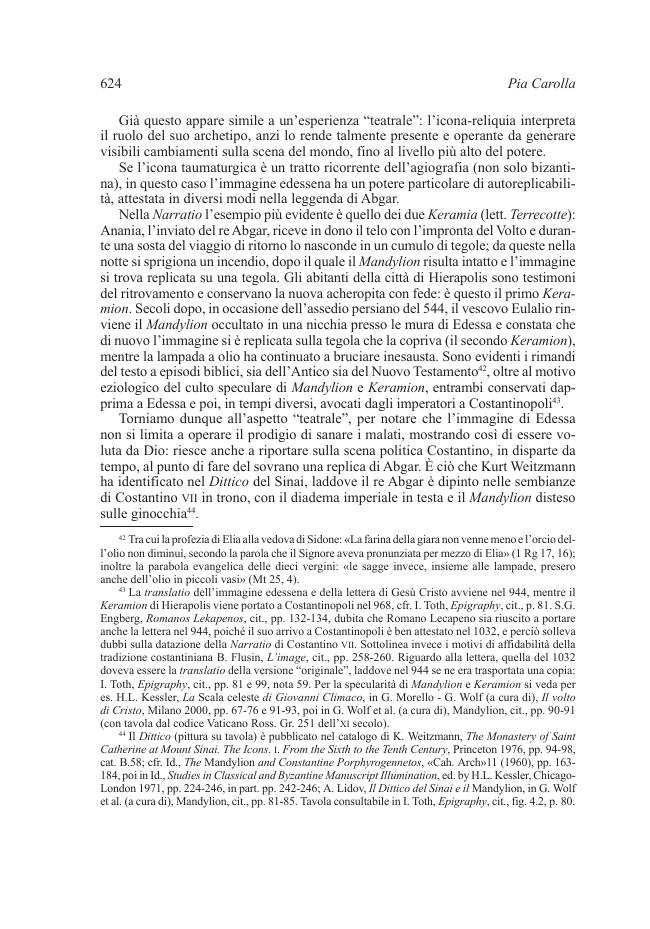L'immagine di Edessa nella narratio attribuita a Costantino VII Porfirogenito
P. 616-631
Revered as acheiropoietos (i.e., not made by human hands), the image of Christ from Edessa was a sacred cloth with Jesus' face. Preserved in the city of Edessa, it was conquered by the Byzantine army under the emperor Romanos I Lekapenos and brought to Constantinople on 16 th August 944. The precious relic, later called Mandylion (tissue or towel), was credited with the power to put onto the throne the emperor Constantine VII Porphyrogennetos (945-959). This paper sheds light on some performing, “theatrical” and even histrionic aspects of the literary sources from the 10th Century, especially the Narratio de imagine Edessena (i.e., the Story about the image of Edessa, BHG 794-796) attributed to the emperor Constantine himself, and the Antapodosis by Liutprand of Cremona.
A later version of the story can be found in Genoa, Italy: the 14th-c. frame of the Mandylion, today in the church of St. Bartholomew of the Armenians, parallels the 10th Century. tradition, including some relevant coups de théâtre. [Publisher's text]
-
Articles from the same issue (available individually)
-
Information
ISSN: 2611-805X



